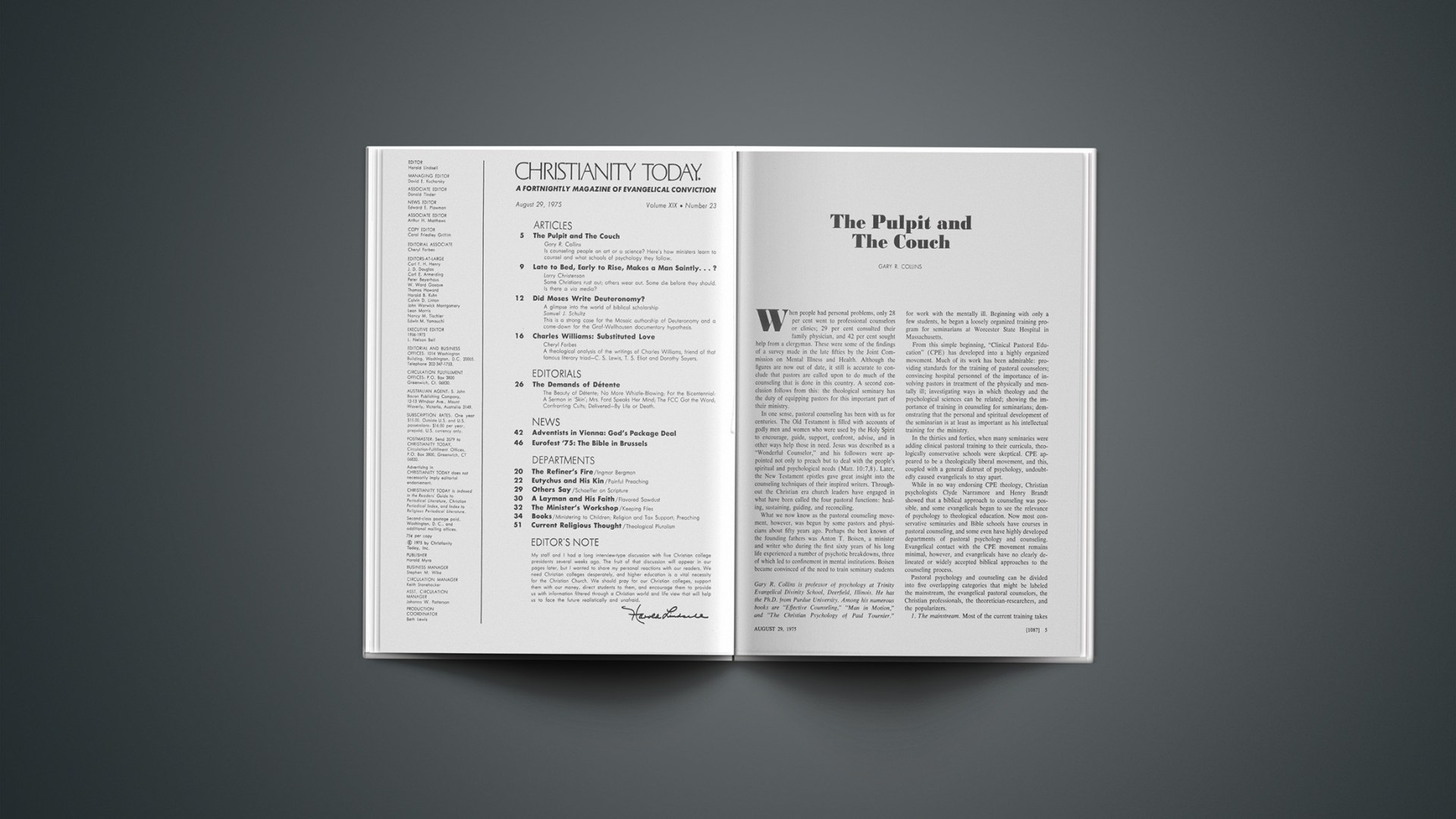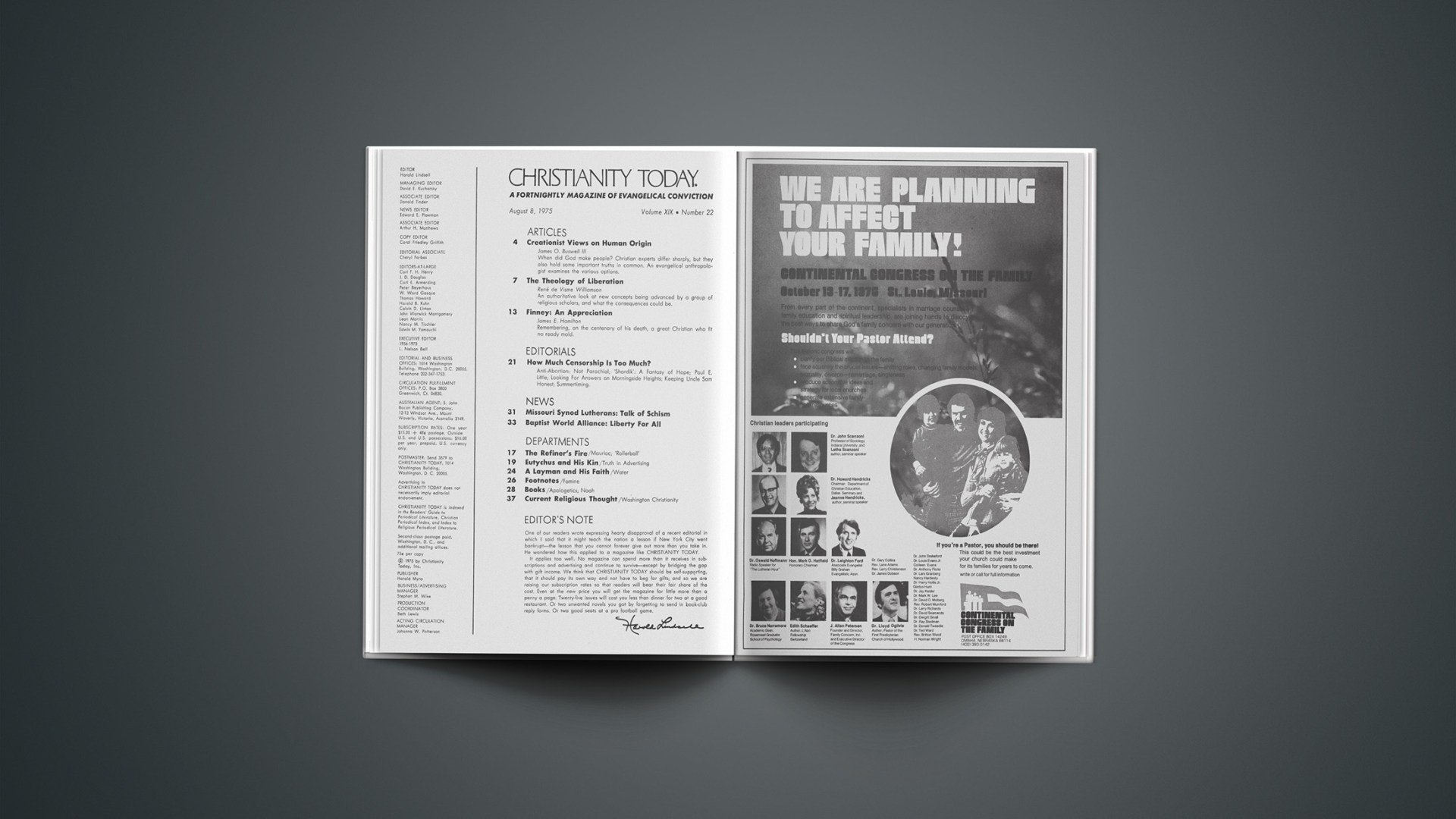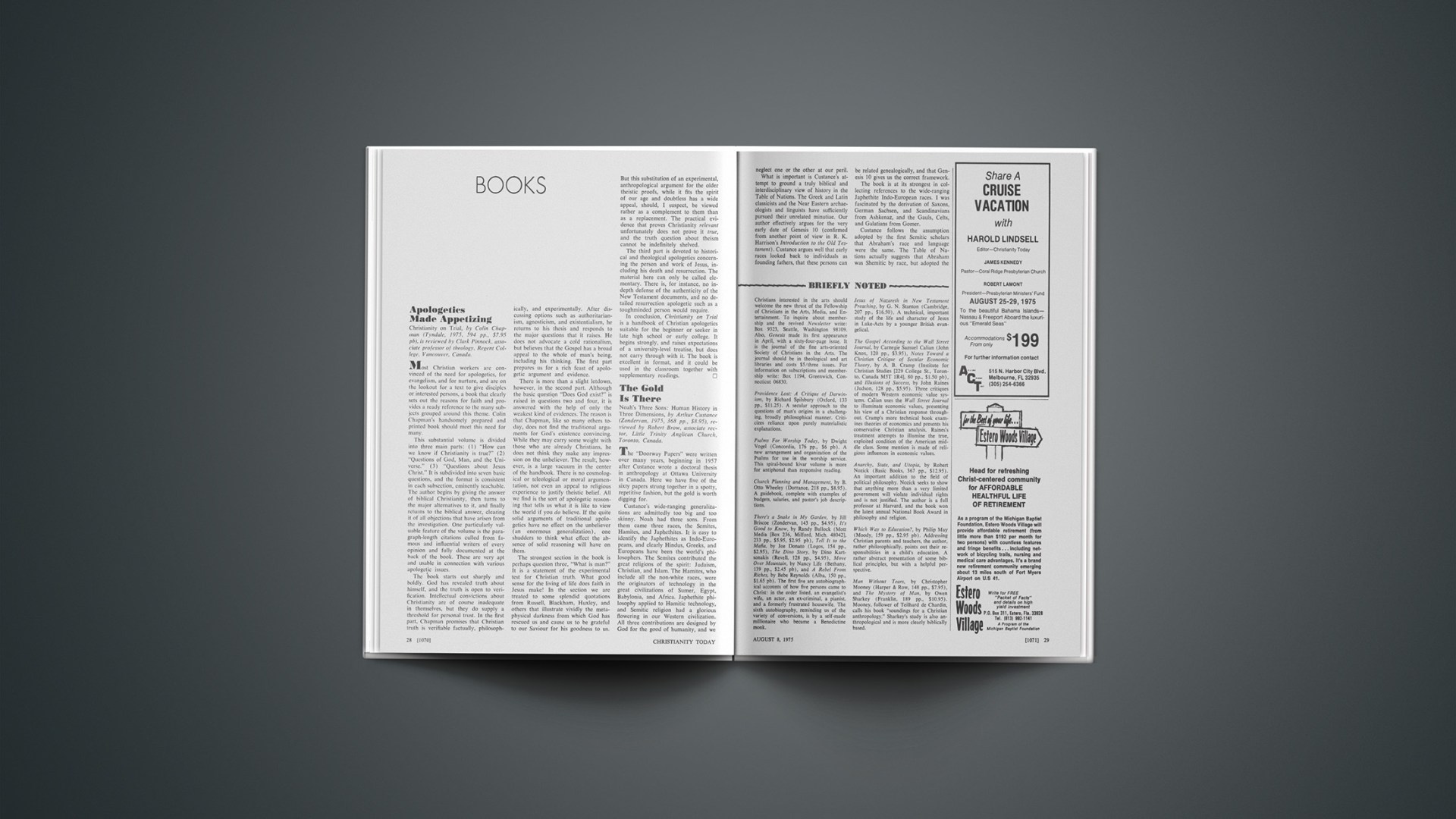Ingmar Bergman: Through A Glass Darkly
Stendhal said that “a novel is a mirror carried along a roadway”; it reflects not only the passing scene but the one carrying the mirror. The same is true of films. Ingmar Bergman’s films may be about the validity of art, as in Hour of the Wolf, or the scourge of war, as in Shame; but they are more a reflection of himself. His early life was deeply influenced by his fear of and isolation from his father, a Swedish pastor; by the making of a cinematograph and the new world that this opened up for him; by the writings of Strindberg and Kafka; and, in his late teens, by his loss of Christian faith, of, soon after, his first love, and then of a close friend.
A little later Bergman flirted with what he calls “a sort of refined existentialism.” Although he reacted against the conventions of bourgeois society, he did not jettison moral categories. He finds no inconsistency between this attitude and “my basic view of things,” which is “not to have any basic view of things.” He is committed to existentialism in part because he sees Christianity as being “deeply branded by a very virulent humiliation motif.” For Bergman, the idea of God is that of “something destructive and fantastically dangerous, something filled with risk for the human being and bringing out in him dark, destructive forces instead of the opposite” (Bergman on Bergman, Seeker and Warburg, 1973).
Before directing films, Bergman spent many years in the theater. He has maintained what is essentially a film repertory company, one that is renowned for consistently superb acting and deeply imaginative and supple direction. Perhaps it was Smiles of a Summer Night that established him as a European rather than a Swedish director, a position consolidated in 1956 with The Seventh Seal and Wild Strawberries.
The key to Bergman’s search and success may be found in his statement that he has “never been able to keep myself from believing that I’m in charge of so sensitive an instrument that it should be possible to use it to illuminate the human soul with an infinitely more penetrating light” (Cahiers du Cinéma) 1956, No. 61: Ingmar Bergman, “Qu’est-ce que ‘Faire des Films’?” The Seventh Seal portrays a man who searches for understanding through understanding alone and who in the process becomes impervious to his fellows. Loss of faith in God is apparent in the film; God is silent because he is not there. Also present in the film is the horror to be found in man’s putting to death the positive qualities by which he lives. (For an extended study of this and other films, see my Images of man: A Critique of Contemporary Cinema, Inter-Varsity, 1974.)
Similar themes may be observed in Wild Strawberries; the story of a doctor whose work was healing, yet who strangled, as it were, any life with which he came in contact. He walks through the arches of the years emotionally uneducated, insensitive to self-knowledge. Both the knight in The Seventh Seal and Dr. Berg in Wild Strawberries, as well as the pastors in Winter Light and Cries and Whispers, long for knowledge, by which they mean an explanation of the suffering and seeming pointlessness of life. Time and again Bergman’s characters ask for verbal confirmation that God is there and life has meaning. But there is only The Silence, and in Cries and Whispers “it’s all a tissue of lies.” The Touch, too, is concerned with the question of God’s existence. Despite the idea of God as destructive and dangerous, man’s nature revolts against the idea of there being no God. Yet it may be asked if in fact Bergman, along with many like-minded people, hates God not because he is not there but because he is there.
Bergman is much concerned with exploring human relationships. He views sincerity in personal relationships as the summum bonum of achievement for a fallen man. Love is often the cause and the effect, but it is frequently seen as tainted and sour; in Smiles of a Summer Night it is said that “sincere love is a juggler’s act” and “a detestable business.” “Love is another word,” says Jons in The Seventh Seal, “for lust plus lust plus lust and a damn lot of cheating, falseness, lies and all kinds of other fooling around.” The quarreling of the couple in Wild Strawberries, the adultery of the wife in The Touch, the corroding passion in A Passion, the disillusionment in Summer Interlude, the horror of the failure of communication of husband and wife and of sister and sister in Cries and Whispers—these are examples of gangrenous relationships. Occasionally this gloom is offset by truth and beauty, as illustrated in the married life of Jof and Mia in The Seventh Seal.
Bergman recognizes the instability of our sense of self, the insecurity and hurt that flow from a loss of identity and the absence of love. This is brilliantly evoked in Cries and Whispers, where, with the exception of Agnes, the characters cannot reach one another and therefore flail at one another in alienation and fear, in their “constant misery and torment.”
There seem to be firm traces of deep inferiority complexes and an almost sadistic intention for characters to humiliate one another in many of Bergman’s more recent films. Perhaps this is most observable in his latest, Scenes From a Marriage. Scenes is a remarkable, deeply moving and disturbing work that implies, as reviewer T. E. Kalem observed, that there is “something endemic in the institution of marriage itself that both curdles love and incubates hate” (Time, September 30, 1974). It would seem also that in the absence of God’s love (for there is no God), human love is the surrogate. Although erotic love persists after the couple have separated, an understanding of themselves as persons who need to go on working at a relationship is as far from them as ever.
Many of Bergman’s films seem to be collages of melancholy plummeting to despair. There is hope, however, even amid the many images of death and time to be found in the films—hope portrayed in, for example, the person of the child and strolling players in The Seventh Seal and the maid with her simple faith in Cries and Whispers. But perplexity and confusion continually surface. We can never know for sure whether we are watching the hopelessness and despair of dramatically “distanced” characters or Bergman’s own despair. Yet one gets the impression that both he and his characters are imprisoned within themselves. His world appears to be limited to despairing and perhaps desperate characters.
Why this attitude of despair? I think it is a symptom of galloping existentialism with the tensions and inconsistencies that this brings. The greatest of these tensions is that modern man does not know what to do with what he knows deep down he is; there is no objective framework into which to fit his uniqueness. Here grows the unassuaged despair. There is no hope because there is no absolute truth.
Bergman, like other brilliant and sensitive directors, reflects and promotes today’s thought-forms and life-styles, embossing his creativity on his view of the world, whether that view is illusory or real. With biblical insights, psychological perception, and inventive genius he refines and redefines the nature of man in himself and in his relationships, creating not only another film but a work of art. He reveals Man, unredeemed man. His films reflect the agony and the ecstasy of fallen man trapped in a universe where God is thought to be dead.
DONALD J. DREW1Donald J. Drew is a college lecturer in English literature in Kent, England.












